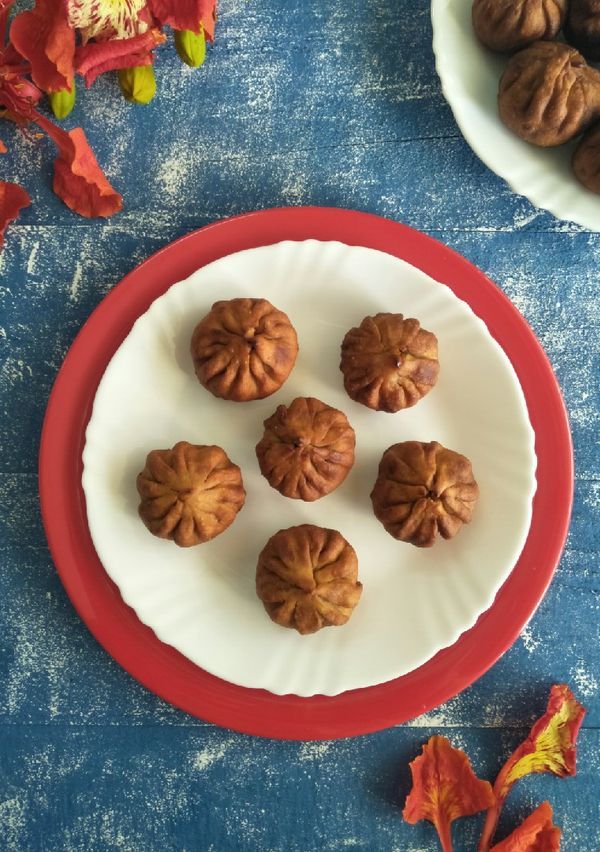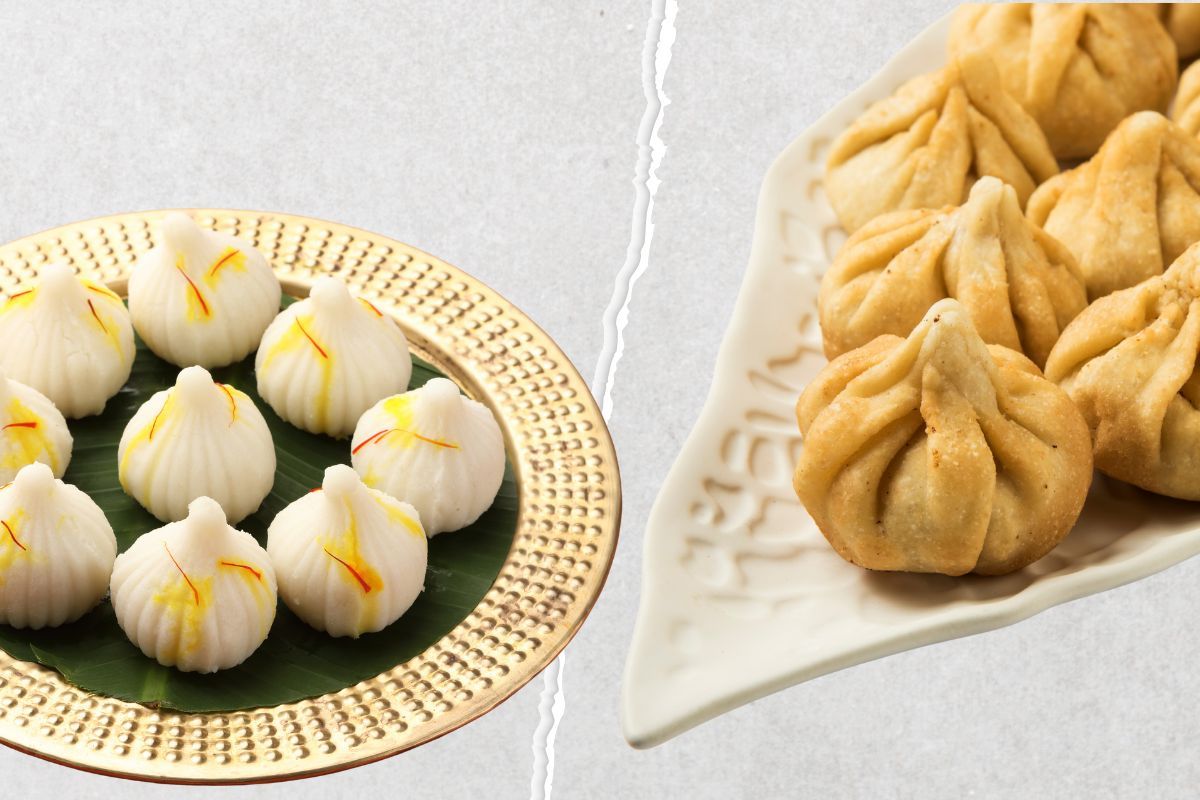Ganesh Chaturthi is right around the corner, and the big question on every home cook's mind is: Ukadiche Modak or Fried Modak? Both are delicious, but they offer completely different experiences. One is a soft, traditional favorite, while the other is a crispy, crowd-pleasing sweet.
What's the Real Difference?
At its core, the difference is simple: ukadiche modak is steamed, and fried modak is deep-fried. This simple difference in preparation leads to distinct tastes and textures.
Ukadiche Modak is a classic traditional sweet with a soft, delicate, and melt-in-your-mouth texture. Made with a rice flour dough and filled with a sweet mixture of fresh coconut and jaggery, it's often considered the healthier modak option because it's prepared by steaming, not frying.
If you're looking for a satisfying crunch, Fried Modak is the one for you. Made with a dough of wheat flour or refined flour and deep-fried until golden, this modak is crispy on the outside and slightly chewy inside. It's a great option if you need a snack that lasts longer and is easy to pack for guests.
Which Modak Should You Make?
Deciding between the two depends on what you want for the festival.
- For the Health-Conscious: If you're looking for a lighter, more wholesome option for your family, especially for kids or the elderly, ukadiche modak is the way to go. The steaming process keeps them low in oil, and the natural jaggery filling adds a wholesome touch.
- For the Busy Host: Hosting a big group of friends? Fried modak is a perfect choice. They're quick to make in batches and hold up well, so you can prepare them ahead of time without worrying about them getting soggy. Plus, who doesn't love a delicious, crispy treat?
Why Ukadiche Modak Holds a Special Place in Our Hearts
For many, Ukadiche Modak isn't just a recipe; it's a feeling. Traditionally, this steamed variety is the first offering made to Lord Ganesha, and it's a staple in Maharashtrian households. The process of making it—from kneading the soft rice flour dough to carefully shaping each modak by hand—is often a cherished family ritual. It's a sweet that brings generations together in the kitchen, with mothers and grandmothers passing down their secrets, making each ukadiche modak taste like a piece of tradition and love.
Healthy Twists & Kitchen Tips
Whether you choose to steam or fry, here are a few simple tips and healthy twists to make your modaks stand out.
Tips for Ukadiche Modak
For the dough, always use warm water—it makes shaping the modaks much easier.
When steaming, work in small batches for about 10-12 minutes to ensure they cook evenly and don't become soggy.
Tips for Fried Modak
To make these slightly lighter, try swapping out some of the refined flour with whole wheat or millet flour.
When frying, avoid overcrowding the pan to get that perfect golden-brown color every time.
Ready to Start Cooking? Your Recipe Guide Awaits!
Now that you've decided on your modak of choice, it's time to get cooking. We've put together our favorite recipes to help you create delicious, festive modaks for your celebration. These recipes are designed to be simple, clear and foolproof.
Ukadiche Modak


Twists on Ukadiche Modak
While the classic steamed modak is a festival favorite, you can also experiment with flavors and fillings to give it a fresh, modern touch. These variations let you enjoy Ukadiche Modak in new ways. They’re easy to try, kid-friendly, and perfect if you want your festive sweets to stand out.






Fried Modak: The Crispy & Quick Recipe




Pairing Your Modaks: What to Serve with Your Sweets
No festive feast is complete without the right pairings. Here’s how you can serve your modaks for the best experience:
The soft, comforting texture of Ukadiche Modak pairs beautifully with a warm, spiced beverage. Enjoy it with a classic cup of masala chai or a simple glass of warm milk or cold lassi to complement its subtle flavors.


To balance the richness of Fried Modaks, consider serving them alongside something refreshing. A simple, zesty drink like nimbu pani (fresh lime water) can cut through the fried richness, making each bite even more satisfying.

Bottom Line is whether you prefer the traditional and healthier steamed modak or the quick and crunchy fried version, you can't go wrong. Or, if you're feeling adventurous, make a small batch of both to give your family and guests the best of both worlds.
Remember, Ganesh Chaturthi is all about the joy of celebrating together. The best Ganesh Chaturthi recipe isn't about perfection; it's about the love and intention you put into it.
Also Try: Modak Magic: infused with a variety of ingredients


